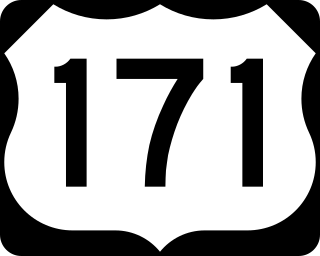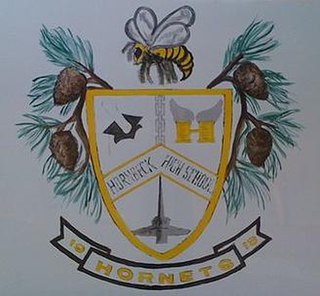
Vermilion Parish is a parish located in the U.S. state of Louisiana, created in 1844. The parish seat is Abbeville. Vermilion Parish is part of the Lafayette metropolitan statistical area, and located in southern Acadiana. At the 2020 U.S. census, the population was 57,359.

St. Landry Parish is a parish located in the U.S. state of Louisiana. As of the 2020 Census, the population was 82,540. The parish seat is Opelousas. The parish was established in 1807.

Sabine Parish is a parish located in the U.S. state of Louisiana. As of the 2020 census, the population was 22,155. The parish seat and largest town is Many.

Jefferson Davis Parish is a parish located in the U.S. state of Louisiana. As of the 2020 census, the population was 32,250. The parish seat is Jennings. Jefferson Davis Parish is named after the president of the Confederacy during the American Civil War, Jefferson Davis. It is located in southwestern Louisiana and forms a part of the Acadiana region.

Evangeline Parish is a parish located in the U.S. state of Louisiana. As of the 2020 census, the population was 32,350. The parish seat is Ville Platte.

Beauregard Parish is a parish located in the U.S. state of Louisiana. As of the 2020 census, the population was 36,549. The parish seat is DeRidder. The parish was formed on January 1, 1913.

Acadia Parish is a parish located in the U.S. state of Louisiana. At the 2020 U.S. census, the population was 57,576. The parish seat is Crowley. The parish was founded from parts of St. Landry Parish in 1886, and later an election was held to determine the parish seat, ending when Crowley beat Rayne and Prairie Hayes. Acadia Parish is included in the Lafayette metropolitan statistical area.

Many is a town in, and the parish seat of Sabine Parish in western Louisiana, United States. The population was 2,853 at the 2010 census, a decrease of 36 or 1.246 percent from 2000.

Hornbeck is a town in Vernon Parish, Louisiana, United States. The population was 480 at the 2010 census, up from 435 in 2000. It is part of the Fort Johnson South Micropolitan Statistical Area.

Leesville is a city in, and the parish seat of, Vernon Parish, Louisiana, United States. The population was 5,649 at the 2020 census. It is part of the Fort Johnson South micropolitan area and is additionally served by the Leesville Airport. The city is home to the Fort Johnson U.S. Army installation.

New Llano is a town in Vernon Parish, Louisiana, United States. The population was 2,504 at the 2010 census. It is a part of the Fort Johnson South Micropolitan Statistical Area.

DeRidder is a city in, and the parish seat of, Beauregard Parish, Louisiana, United States. A small portion of the city extends into Vernon Parish. As of the 2010 census DeRidder had a population of 10,578. It is the smaller principal city of the DeRidder-Fort Johnson South CSA, a Combined Statistical Area that includes the Fort Johnson South and DeRidder micropolitan areas, which had a combined population of 87,988 at the 2010 census.

U.S. Highway 171 (US 171) is a part of the United States Numbered Highway System and the only route within that system currently located entirely within the state of Louisiana. It spans 177.44 miles (285.56 km) in a north–south direction from the junction of US 90 and Louisiana Highway 14 (LA 14) in Lake Charles to the junction of US 79/US 80 and LA 3094 in Shreveport.

Central Louisiana (Cenla), also known as the Crossroads, is a region of the U.S. state of Louisiana.
Vernon Parish School Board is a school district headquartered in Leesville, Louisiana, United States.

The DeRidder-Fort Johnson South, LA combined statistical area is made up of two parishes in central Louisiana. The statistical area consists of the Fort Johnson South Micropolitan Statistical Area and the DeRidder Micropolitan Statistical Area. As of the 2000 census, the CSA had a population of 85,517.

Hornbeck High School is a school located in Hornbeck, Louisiana, United States. The PK-12 school is a part of the Vernon Parish School District headquartered in Leesville and has been home to Hornbeck High School, the only public school in the community, since 1898. In 1910, Hornbeck High School became an affiliated high school, although the school's crest bears the date 1913.

Pitkin is a census-designated place (CDP) in Vernon Parish, Louisiana, United States.
Fort Johnson-Vernon Wildlife Management Area is a 105,545-acre tract (42,713 ha) of protected area in Louisiana within the United States Army military reservation of Fort Johnson. The WMA is located approximately ten miles southeast of Leesville, in Vernon Parish, east of U.S. Highway 171, one mile south of Louisiana Highway 28 and one mile north of Louisiana Highway 10.
William H. West was an American educator and politician.
























